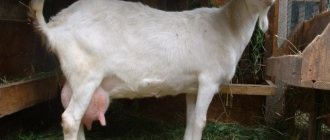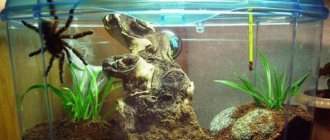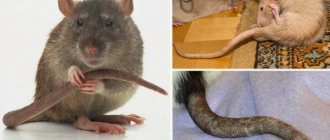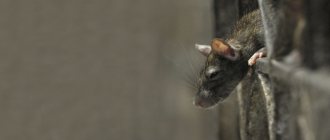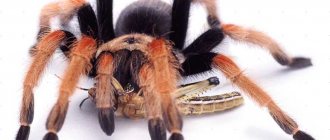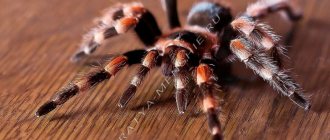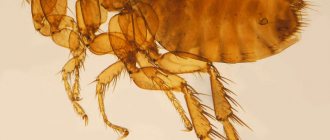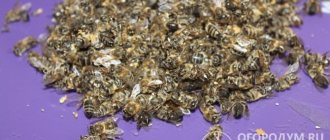Rats are intelligent, affectionate and playful companion animals. And if you've never owned a rat before, you might be wondering what their lifespan is.
Choosing a healthy pet rat and providing it with proper care and nutrition throughout its life can go a long way in extending its life.
What determines the lifespan of a rodent?
- Pedigree of the rat.
An inexperienced breeder may cross-breed sick animals and pass on undesirable traits to the baby rat, such as an inherited health condition, along with a certain color or coat pattern.
The optimal age for purchasing pet rats is about 6 weeks. Look for a healthy rat with shiny fur and lively eyes. Healthy rodents should also be active and inquisitive.
The rat you choose should not be sneezing, have a runny nose or red eyes. And you should make sure that the rat's droppings are dark and hard.
- Rat nutrition throughout life.
A rich diet for your pet rat is a guarantee of a long and happy life. Make sure she eats food specifically made for rats, and be aware of which human foods are safe to eat as rodent treats and which are toxic.
Origin and characteristics of the decorative rat
The ornamental rat is a descendant of the gray rat or rattus norvegicus. Black rats or "rattus rattus" are in no way connected with the origin of the domestic form of the animal. In the scientific literature they are called “rattus norvegicus forma domestica”: that is, in simple terms, a decorative rat is a domesticated wild bee.
Domestication or domestication does not mean the taming of a wild pasyuk, but a consistent change in a wild animal, during which it is kept in isolation from its wild counterparts for several generations and is accustomed to free interaction with humans.
In the process of artificial selection, rats adapt to life at home, changing their instincts and behavior. In particular, animals get rid of their fear of humans and new situations; their survival instincts, necessary in the wild, weaken. In addition, during the selection process, the appearance of the Pasyuk (not to mention the many artificially bred decorative varieties) also changed: the coat and color of the skin, the shape of the ears.
If ornamental animals are released into the wild, they will quickly die - from hunger, disease, the teeth and claws of a predator, or the hands of a person who mistakenly mistook them for an ordinary pest.
Wild gray pasyuki freely mate with ornamental rats, producing healthy, viable offspring. Rats born from such a “union” are called half-fathers. Some breeders purposefully raise ornamental rats by crossing them with wild rats.
Decorative and tamed pasyuki calmly coexist in the same cage, but black rats cannot be placed with them: they are weak and small, and decorative rats can kill them, obeying basic instincts.
How to extend the life of a pet?
Once you bring your new rat home, how do you ensure it has a long, healthy life? This can be done with the right diet. Here are some tips from nutrition experts:
- Plan your rat's diet. Like other pets, rats that are fed large portions of junk food can become obese. Even a small reduction in food intake can significantly increase the number of years your pet will live and improve its overall health.
- Feed your rodent food rich in antioxidants. As in humans, oxidative stress caused by free radicals in the body can cause disease and accelerate the aging process.
- Provide your rat with fresh vegetables such as carrots, broccoli and peas. Be sure to feed your pet food designed for rats and not other small rodents, as each animal has different nutritional needs.
- You can feed your rats fresh fruit from time to time. Rats also enjoy foods such as bread, nuts and boiled eggs.
However, save these foods for special occasions, as too many treats contribute to unhealthy weight gain. Additionally, a diet high in sugar and fat is unhealthy for a rat and can lead to health problems, just like in humans.
Care
Lifespan depends on care. It is important to consider many points and familiarize yourself with them before purchasing a pet:
- The pet's cage should be spacious and mesh. It should provide a place to sleep. Usually - a special house made of wood or other non-toxic material. Rodents are active animals. It is advisable that special obstacles are located in the home. You can make them yourself or purchase them at any nearby pet store. It’s better to take two rodents at once. One needs to devote more time so that he does not get bored. The home must have filler.
- The rodent's place of residence must always be kept clean. The drinking bowl should be washed daily and any leftover food should be thrown away. The cage should be thoroughly cleaned at least once a week. From time to time, your pet should be allowed to walk around the room. At the same time, it is important to ensure that no one steps on him and that there are no other animals nearby that could harm him.
- The rodent should be fed with special food. Such food is balanced and contains the necessary amount of vitamins and microelements. Proper nutrition is the key to longevity. 20% of the diet should be fresh vegetables. From time to time you can pamper your rat with boiled lean meat. It is also recommended to feed sprouted grains.
Periodically, you need to take your rodent to a veterinary clinic for examination. This will allow timely detection and prevention of some pathologies. It is strictly forbidden to place wood filler in the cage. It negatively affects the pet's respiratory system. This is due to the content of some essential oils in it.
Diseases of domestic rats that most often kill rodents
- Respiratory diseases.
This is the most common health problem in rats. Pay attention to discharge from the eyes and nose, as well as sneezing.
Most respiratory infections are bacterial and can be treated with antibiotics. Viral infections require good supportive care such as a good diet and proper cage conditions.
To prevent respiratory infections, the rat's cage should be kept clean and well ventilated.
- Cancer.
Fortunately, most tumors in pets are benign. Cancer is more common in female rats. It usually appears on the mammary glands from 18 months of age, as this is when female rats stop ovulating.
If you feel any lump under your pet's skin, contact your veterinarian. There are various treatment options, including surgery, to remove the tumor.
- Skin parasites.
Rats are most susceptible to skin mites. The prevalence of skin mites can range from a few to a complete infestation.
A few mites are common on most rats and are not a problem. However, if a pet is stressed or sick, it is vulnerable to developing an infestation. This can be treated with medication. But prevention is always better.
The rat's cage should be kept clean and disinfected frequently to prevent mites. Additionally, you should feed your pet a proper nutritious rat diet and try to prevent them from becoming stressed.
Genetics
The lifespan of a house mouse is influenced not only by lifestyle, but also by genetic predisposition.
The fact is that in pet stores, rats live in mixed-sex packs , which does not happen in the wild. Animals living in crowds mate uncontrollably, after which they live in cramped conditions unsuitable for normal existence. It is very difficult to trace the genetics of such an animal, so it is impossible to say how long such a rat will live and what life awaits it.
A completely different situation arises when animals are bred by a breeder. Matings in such cases are planned, and partners are selected depending on temperament. Rat pups from peaceful, sociable parents are prepared for sale as pets. Such babies are brought up in a favorable environment, which prevents the pet from displaying aggression in the future.
Females in nurseries give birth to cubs no more than twice a year . Frequent pregnancies exhaust the animal, as a result of which it produces weak, non-viable litters.
In order for a pet to be healthy, please its owners and live a long life, it must be purchased only in special institutions.
You will learn how to make the life of a pet rat comfortable in this video.
How do the life spans of different breeds of rats differ?
Regardless of whether we consider the lifespan of Dumbo or Albino rodents, it is almost always the same. Rats typically live between 2 and 3 years.
- Dumbo. The normal lifespan of a healthy dumbo rodent should be 2 to 3 years or more. The main cause of disease or shorter life span is inbreeding.
- Sphinx. Unfortunately, hairless rats have many more health problems than their furry counterparts. Hairless rats not only lack fur, but also the thymus gland. Iron necessary for the development of the immune system. Therefore, they have a shorter lifespan than regular pet rats, ranging from 6 to 12 months.
- Albino (white rat). Although hairless rats do not live as long, fur color and markings do not affect its overall lifespan. Rats of any color, including albinos, can live long enough without problems if they are bred by a conscientious breeder and properly cared for by the owner.
Varieties
The result of long-term selection work was the emergence of several subspecies of Dumbo rats, which differ in color and the presence of fur. Eared animals can be either shaggy or bald, and can also be black, white, gray and red. Depending on your taste preferences, you need to purchase the appropriate breed.
Rex
Representatives of the Rex breed have curly, dense hair that evenly covers the entire body, making the pet soft and plush. Newborn babies with protruding hair look comical and funny. Some individuals even have curly mustaches.
Sphinx
The Dumbo Sphynx breed is distinguished by its complete absence of hair. Small folds of skin can be seen on the soft, velvety body, which can be pink, white, blue or black. The length of the whiskers can be either large or small, and in some pets they are completely absent.
To preserve the genetic characteristics, experts do not recommend crossing the breed with other representatives of the Dumbo. To prevent aggression from rats with fur, it is necessary to place naked pets in a separate cage. This breed is chosen by people who are allergic to wool.
Siamese
Unique representatives of this subspecies have a soft cream coat color, against which the brown muzzle and paws look impressive.
Husky
At birth, Husky rats have a standard color range, against which white hairs may appear only after a few months.
Manx
Manx rats are tailless representatives of the species. This feature was caused by a gene mutation and caused negative reviews from specialists.
The absence of a tail has a negative effect on the skeleton and the life period of the animal, which does not exceed 12 months.
Blue mink
Blue mink is a unique subspecies that has gray wool with a blue tint. Amazing colors significantly increase the cost of baby rats on the market.
How long do rodents live in the wild?
Rats in the wild are usually black or brown. But people began to catch white (albino) rats born from ordinary wild rats and keep them as pets. Many wild rats do not live to see their first birthday. Rats typically live between 6 and 11 months in the wild.
Rats in the wild face many more dangers than domesticated rats. They often become prey for many predators. Feral rats are also affected by food shortages.
Given these threats, it is not surprising that wild rats do not live very long.
To what age do they grow?
Rats grow and develop quickly. This process occurs most actively from birth to 6 months:
- On days 3–4, the ears open.
- Teething begins on days 9–10.
- Eyes open after 2 weeks.
- By day 16, the fur already completely covers the body.
- Molars erupt in 35–40 days.
- At 3 weeks of age, puppies are already eating from the feeder.
- On the 25th day, the babies are separated from their mother.
In addition, the growth of puppies does not stop, but becomes less noticeable. At the age of one year, animals become fully formed. During this period, their weight is 300–600 g: females grow twice as large as males.
How long do rats live at home?
Most often, pet rats stay with their owner for 2 to 3 years. This is 1.5–2.5 years more than a wild rat can live.
Because they live indoors, pet rodents are less vulnerable to both predators and food shortages. With a caring owner, pet rats can also receive veterinary care when signs of illness appear.
All these factors allow rodents to live for many years.
Why is the rat's life span so short?
How many years an animal will live depends on its genetics - the lifespan allotted by nature is written in the DNA of the rodent. The lifespan of a rat is directly related to the reproductive ability of the animal.
Rats are ready to breed from 1.5 months of age. In one litter, a female can bring up to 14 rat pups. Having not yet stopped feeding the offspring, the tailed mother is already ready for a new pregnancy. It is because of this that it is prohibited to keep rodents of different sexes in the same cage - the female will give birth continuously, and this will be an excessive burden on her body.
Another reason for the short life of a rat is its high-speed metabolism. Without food, these animals die in just 2-3 days - the rodent body, which does not receive food, eats itself.
Description
The Dumbo rat is a small decorative animal that has disproportionately large, low-set ears.
Representatives of this breed differ from ordinary rats in the shape of their ears, which come in two types:
- in the form of a plate;
- in the form of a bud.
European buyers prefer animals with ears in the form of buds. The maximum size of a well-fed pet's body is 20 cm, and the weight of an adult can reach 400 g. Boys are much larger than girls. The animals have a round head with an elongated, pointed muzzle. Eyeballs are round. Some representatives of this breed have a thick, fleshy tail, and some have this part of the body completely absent.
Animals have a short life span, which does not exceed 5 years. The average life expectancy is 3 years.
Causes of premature death of animals
Walking outside the cage is deadly for a pet rodent. The animal tries everything that it has access to – outside the cage it can be wires and other dangerous objects. On such a walk, the rodent risks getting:
- electric shock;
- poisoning with something (for example, detergents), etc.
In addition, small pets often suffer serious injuries and even die due to the carelessness of their owners. Owners of rodents often step on the animals, crush them with furniture, etc. Rats move faster than their owners assume, so the latter simply do not have time to notice where the animal has moved. Because of this, accidents occur, often resulting in death for rodents.
Often, animals sneak onto the balcony unnoticed by their owner, from where, due to their semi-blindness, they fall down and, alas, die. The rat's climbing of the curtains and subsequent fall also ends tragically.
Among other things, rats often die from the paws, or rather teeth, of other pets - cats and dogs. These animals are natural hunters, so they perceive rodents as prey. It is also worth noting that a particularly impressionable animal can die from fright - a small rat’s heart cannot stand it.
Tame rats are pampered creatures. Once on the street, they will not survive. To protect your little pet from death, injury and stress, you should keep him in a cage and let him out for a walk only under supervision and only in a pre-prepared, fenced area.
Treatment methods
The main goal of drug treatment for stroke in rats is to negate the negative consequences after the stroke has occurred and relieve inflammation from the cells.
Along with therapy, it is very important that the animal feels comfortable and is surrounded by care and proper care.
There is no single cure for the consequences of a stroke; it is a whole range of measures, including:
- Rehydration of the body - for this, a rehydration solution is administered.
- Anti-inflammatory drugs - to relieve inflammation in brain cells and tissues.
- Antiemetics - if after first aid it does not go away and the animal continues to vomit.
- Sedatives - help cope with disorientation.
- Antibiotics - to prevent the addition of a secondary infection, because The rodent's body is weakened after a stroke.
- Oxygen - to eliminate the effects of brain hypoxia.
- Corticosteroids provide comprehensive treatment to eliminate the severe consequences of a stroke.
- Diuretics - to prevent swelling.
Before starting treatment, the specialist must carry out a number of diagnostic measures that are aimed at establishing a diagnosis and the reasons that led to the disease.
For diagnostic purposes, a CT scan (computed tomography of the head) and an X-ray of the rat’s head can be used; these measures will help identify hematomas and/or tumors. An ophthalmoscopy examination will help identify disorders in the retina and signs of hypertension; these data are necessary for prescribing therapy.
After diagnosis and treatment, the animal is sent home; further care and rehabilitation depends on the owner of the animal.
The attending veterinarian decides how to treat a stroke in a rat; without the necessary knowledge, self-medication can harm the animal even more, which will lead to dire consequences.
Types of stroke
Stroke in pet rats is divided into two types - hemorrhagic and ischemic.
Hemorrhagic stroke is intracerebral hemorrhage. Ischemic stroke is a disorder of cerebral blood circulation that damages brain tissue.
For convenience, consider the table:
| Hemorrhagic | Ischemic | |
| Onset of the disease | Sudden | Gradual |
| External signs | Increased sweating, cramps, hyperemia | Not expressed |
| Motor excitement | Expressed | Not expressed/Rarely |
| Convulsions | Yes | Rarely |
| Breath | Snore | Often no change |
| Impaired consciousness | Swift | Slow |
Based on the above, we can conclude that with a hemorrhagic stroke in an animal due to a rupture of an artery or a traumatic brain injury, the stroke occurs spontaneously, and this type of disease is considered more dangerous, more often leading to death.
Ischemic stroke, which occurs as a result of narrowing or blockage of individual vessels, occurs differently; if the development of this type was rapid and with loss of consciousness, then, most likely, an embolic type occurred.
Characteristics of panoramic perception
To compensate for myopia, rodents are given panoramic perception. The eyes of the animals are located on the sides of the muzzle. This arrangement provides expanded visual coverage of the territory.
It is worth noting that in animals the pictures that each eye sees do not coincide and are not combined into a single whole, as is the case in humans. Thanks to this overview, the animal quickly notices the appearance of an enemy.
The distance of the eyes from each other negatively affects binocular perception. If in humans it is 105%, then in rodents it is only 76%. This low figure is slightly compensated for by a visual feature called motion parallax. With its help, the rodent determines the distance to the object. When you move your head from one side to the other, objects also move. The movement of nearby objects is accelerated. This difference allows the animal to determine the distance.


